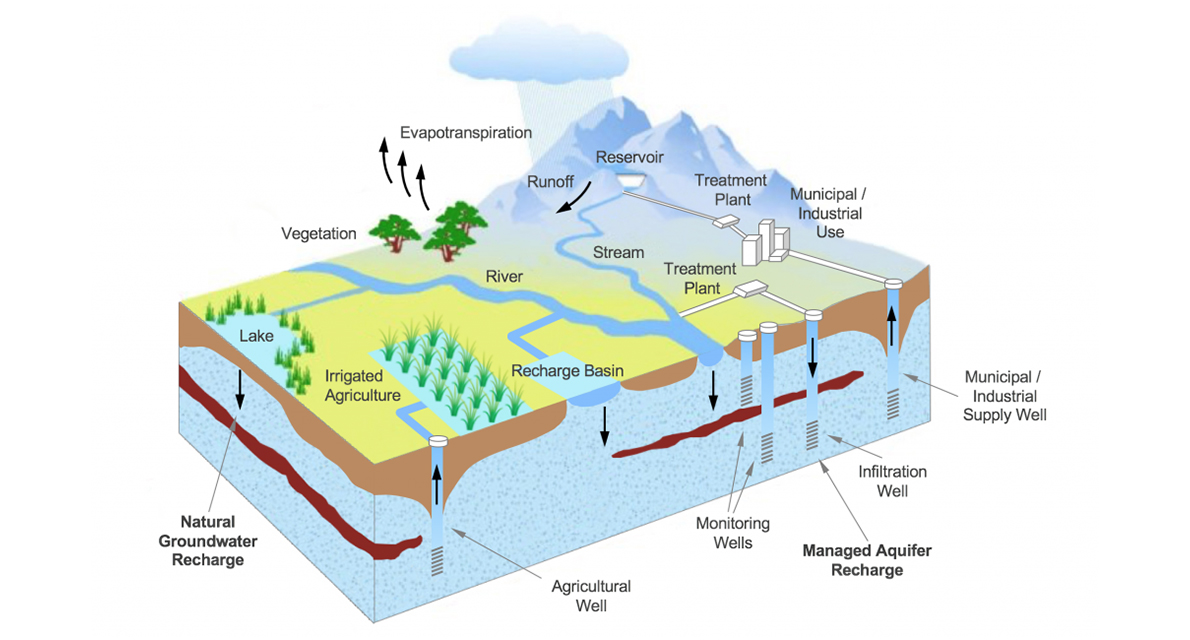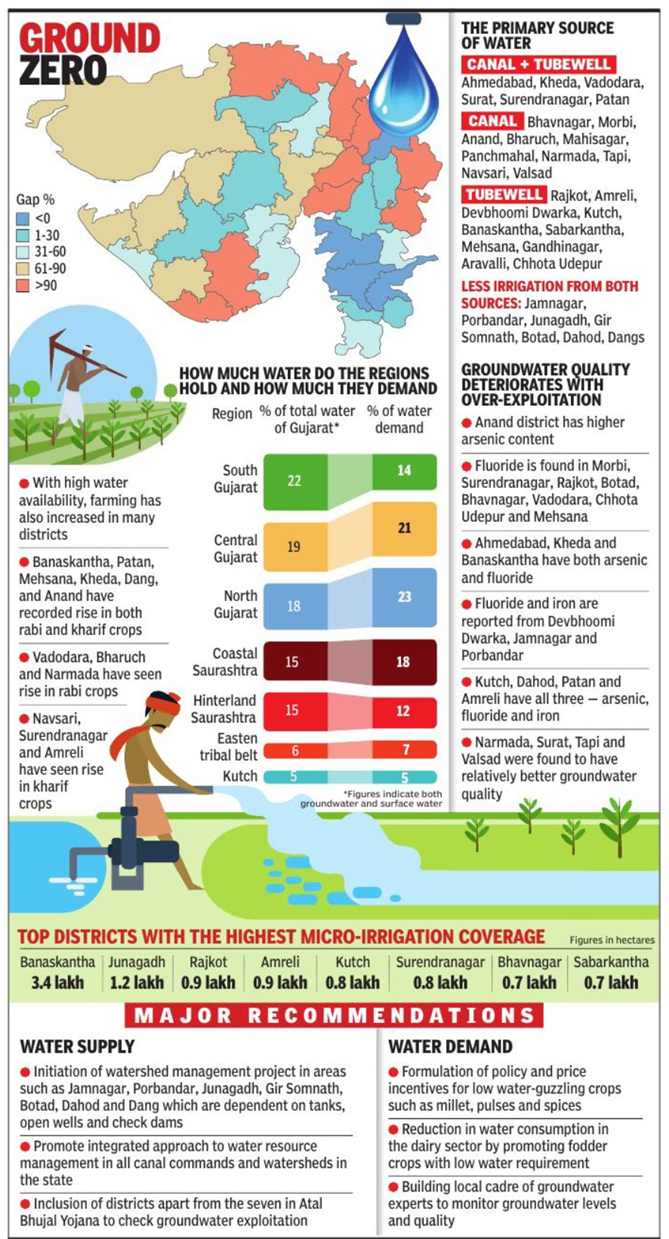‘Against Increase in Water Supply, Demand Going Up More Rapidly’
Ahmedabad : With a few good years of rainfall and a significant rise in water distributed through the canals, Gujarat’s water security scenario is better off now than it was a decade ago.However, even today, 16 of the 33 districts including Ahmedabad are ‘water deficient’ in terms of their demand and supply.
A study titled ‘Building Informed and Scalable Water Security Solutions for Gujarat,’ carried out by Development Support Centre (DSC) and other NGOs, assessed the groundwater, surface water, crop pattern and water quality among other parameters based on both primary and secondary data to estimate the demand-supply gap and the way forward.

Photo courtesy: GreenBiz.com
Mohan Sharma, executive director of DSC, said that a major highlight of the study was the demand outrunning the significant increase in supply. “Farming and dairy sectors have increased in many districts, and thus we see that Banaskantha, Sabarkantha and Aravalli, etc. , do not have adequate local resources. While on one hand we have farmers, who draw excess water from the canals fearing irregular supply, on the other, we have farmers who dig up to 800 feet in search of water,” he said, adding that over-exploitation in some blocks has affected water quality adversely, especially in terms of fluoride and iron.
Sachin Oza, project anchor, said that the need of the hour is to secure the future by ensuring that region-specific crops are grown in accordance with water availability and climate.

“We have recommended sowing millet varieties in Gujarat’s eastern tribal belt in the International Year of Millets since they consume less water. We have also recommended widespread formation of integrated water management committees or participatory
groundwater committees under initiatives such as Atal Bhujal Yojana which is already active in several districts of the state,” he said, adding that some of the dairies have also done well in the state to reduce water intake.
The team also stressed incentivizing villages that utilize existing infrastructure such as check dams, wells, etc. , by properly maintaining them as the primary survey indicated that many of these structures are in dilapidated conditions. Some of the crops the study recommended for its low water demand and relatively higher economic returns included castor, gram, cumin,brinjal, tomato, sesame, isabgol, coriander, urad, mustard, fennel, and okra in different regions. A majority of the millet varieties have relatively low water demand and yield low returns.
Vardhman Envirotech
India’s Passionate rainwater company
This article is published on: – TIMES OF INDIA – 13 MARCH /2023
We would like to spread this for the benefit of fellow Indians.
